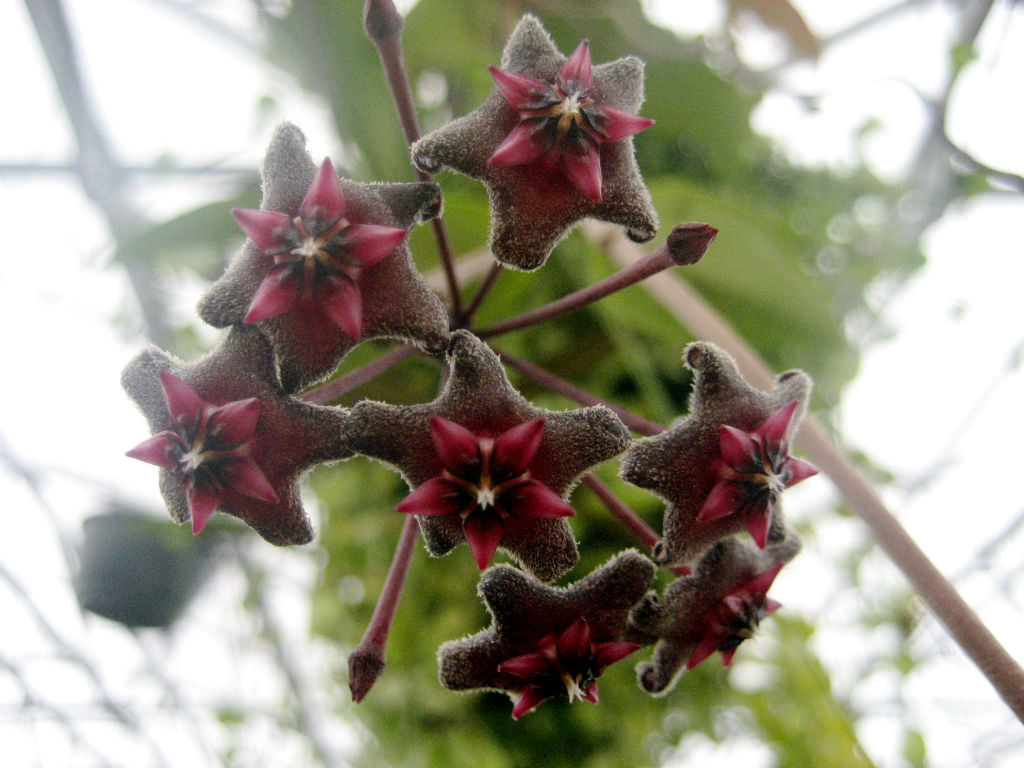
These plants like bright, indirect light and a temperature range of 60 to 86 F. You can watch and smell these blooms all year long.

Like other Hoya flowers, they are star-shaped along with an alluring smell of honey. The leaves of the Biblobata are a distinctive light green color and oval shape, and the foliage is also smooth with a leathery touch.Īs many as 25 dark red flowers bloom in a compact cluster. The trailing vines of this plant can reach as long as 2 feet. It is native to the Philippines and is a flowering evergreen. This plant is popular but difficult to grow. Hoya Biblobata Hoya Biblobata – exudes a faint honey smell. To keep them at home, you can use a simple indoor potting mix and general fertilizer to feed this plant. In their natural habitat, you will see these growing in trees out in nature. This plant is a subspecies of the Hoya Lanceplata and it grows on the surface of another plant. Never place this plant in direct sunlight. Just make sure you never let its soil dry out and give it some shade. It is a slow-growing and low-maintenance plant. This plant comes from Myanmar and surprisingly thrives in cool temperatures.
#Hoya red button flower how to
If you are still learning how to manage your green thumb, the Hoya Bella may work for you. Hoya Bella During blooming, Hoya Bella has a pleasant, not intrusive aroma. Look out for the lovely white flowers to grow in clusters any time of the year.Įven though these plants can grow to some impressive heights, you can keep them inside as long as you don’t overwater or over-fertilize them. It has an upright growth habit since it is a climbing vine, and it’s best to find an expansive space for it since it can reach 32 feet long.īutterflies also love these plants as much as people do, so you may spot some stunning butterflies in your garden with the hoya australis. It has gained popularity for its fragrant white flowers. Scientific name: Hoya australisĪs the name implies, this plant comes from Australia. Hoya Australis (Blue Hoya) Hoya Australis – blooming can occur at any time of the year. The ideal temperature is between 60 – 95 degrees F. In the fall and winter, this plant is super easy to care for since you only need to water bi-weekly. Keep it in a snug pot with good drainage, and make sure to apply regular hydration during the growth schedule. Plant these in areas with good sunlight and high humidity. It gets its name from the famous explorer and aviator Richard Archbold. This Indonesian plant has thick, strong leaves with pointy edges, and the blossoms are pink with a purplish center. Hoya Archboldiana Hoya Archboldiana originates from the tropical and subtropical regions. Proper fertilization will produce more of the flat star-shaped flowers that add a gorgeous touch to your outdoor space. Keep the temperature above 57 degrees F, and feed it during the growing season with a fertilizer.
#Hoya red button flower full
The plant originates from Southeast Asia and needs full sun to partial shade. This hoya grows quickly, producing large, white flowers.

Hoya Albiflora is climbing plant can reach eight feet high.

Hoya Albiflora Hoya Albiflora is a low-maintenance flower. If you want these for your garden, USDA hardiness zone 10 is best. Place it in moist and well-draining soil. Make sure to provide regular hydration, but be careful because overwatering is a common mistake that destroys the plant. The ideal temperature range is 65 to 80 degrees F with filtered direct sunlight. You may also hear the name Red Wax plant due to its stunning red blooms. These native Solomon Island plants carry a strong fragrance with fuzzy leaves and red flowers.

Hoya Affinis Hoya Affinis has fragrant, large flowers that range in color from deep red to pink.


 0 kommentar(er)
0 kommentar(er)
